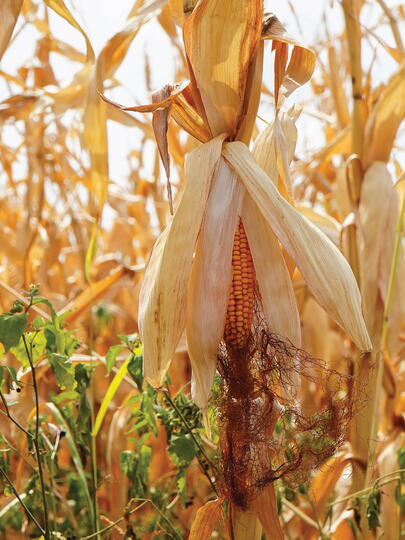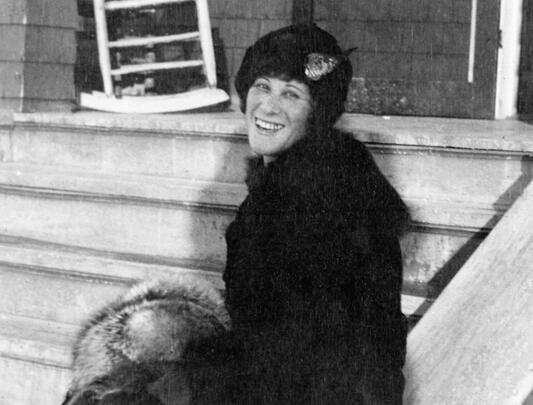Anti-racism starts with knowing the history of racism in Canada
Learning about past wrongs can help us better fight racism in the future, says UBC Okanagan’s Dr. Shirley Chau.
It’s often said that history repeats itself, and racism between citizens and nations is no exception. Threaded throughout human history, including the relatively brief history of Canada, are strands of racism; thicker at some times and thinner at others, but ever present.
However, according to Dr. Shirley Chau, an associate professor at UBC Okanagan’s School of Social Work and Co-Chair of UBC’s Anti-Racism and Inclusive Excellence (ARIE) Task Force, the resurgence of racism doesn’t have to be inevitable.
“It begins with acknowledging racism exists and there are real effects on people’s lives,” Dr. Chau says.
“We need to learn the accurate accounts of history. This includes the existence of Indian Residential Schools and their influences, the Sixties Scoop, the internment of Japanese Canadians, the Chinese Head Tax and Exclusion Act, the Komagata Maru incident, and many more.”
Racist ideologies are at the root of such policies, Dr. Chau points out. The history of many countries, Canada included, feature periods where racist ideologies have dominated, such as white supremacy. White supremacy is the belief that light-skin people, often referred to as white people, are inherently superior to other people not viewed as white.
“It’s important to distinguish between white individuals and white supremacy as an ideology,” she says. “As individuals, people can choose to be racist or anti-racist.”
Japanese Canadian internment in the Second World War was an example of white supremacy and displacement/dispossession in practice. The Canadian government interned 21,000 Japanese Canadians in camps — including 76 UBC students — and permanently dispossessed them of their land and property. In 2012, UBC made efforts at reconciliation by awarding these students honorary degrees and launching the 1942 Japanese Canadian Student Fund in tribute.
Japanese Canadian Aya Suzuki wrote to the government in protest of her land being sold: “You have gone against our wishes, also without even consulting us…. What are we (Canada) fighting for? Not that same treatment the Nazi's [sic] gave the Jews be practised here in our own country!”
German and Italian Canadians, by comparison, were in most cases only required to register as enemy aliens.
Flash forward to Canada today, where a March 2023 report from BC’s Human Rights Commissioner found that the number of police-reported crimes motivated by race or ethnicity in Canada increased 80 per cent between 2019 and 2020.
The report points to “racist and xenophobic narratives which scapegoated and blamed China and Asians more generally for COVID-19.”
“When this surge in anti-Asian racism began,” Dr. Chau says, “many Asian Canadians, Asian Americans. and others were able to call them out, as they were similar to the incidents experienced in the 20th century. The evidence is still fresh.”
For Indigenous populations, the report discusses whether discriminatory treatment really increased or if it just became more visible.
For example, when Indigenous peoples were prioritized for COVID-19 vaccinations as an at-risk population, they became the target of hateful online messages. For Black populations, the rise in hate may be linked to events separate from the pandemic, including the 2020 murder of George Floyd and the protests that followed.
“Racially motivated assaults emerge from disinformation based on racist narratives,” Dr. Chau explains. “This upholds the ideology of white supremacy to justify actions to drive people from staying in Canada and elsewhere, excluding them from the education system, and restricting employment.”
What do we learn from racist incidents seen on the news, as well as the untold incidents experienced in our communities?
Dr. Chau points to the numerous educational resources available, like the 2015 Truth and Reconciliation Commission (TRC) Reports and Calls to Action, and the 2017 Landscapes of Injustice project, which educates about the dispossession of land from Japanese Canadians.
For many Canadians, the TRC reports were the first time they learned in depth about the history of residential schools and their legacy. For students born before the 1990s, the subject was never included in the curriculum. Only in the past few years has British Columbia begun to implement this history into grade school curriculum, as per Calls to Action 62 to 65, which are specific to education and reconciliation.
“By learning about how racism happens and its effects, people can intervene when they witness it,” Dr. Chau says. “They can also provide support to the victim-survivor.”
She adds: “Speaking up to stop discrimination may feel uncomfortable at first but that’s normal. Standing up for what’s right feels uncertain in a culture that teaches us to mind our own business.
“Witnesses can also support the victim during and after the incident and to report it to the appropriate people. At UBC campuses, this includes the Equity and Inclusion Office, supervisors, or, for faculty members, the Faculty Association.”
Indeed, given its size and make-up, UBC is a microcosm of Canadian society; a part of its fabric and history, but also separate and able to focus efforts on its dual campuses, which then have influences beyond them.
“Students are perhaps the best judges of the success of anti-racism efforts,” Dr. Chau says. “Both while they’re here for their studies and after graduation.”
She continues: “UBC students who engage in education and training in an anti-racist approach will find it serves them well. They’ll learn to think critically about world events and their observations and experiences. With a solid grounding in history, they won’t be easily fooled by misinformation and disinformation purposefully designed to mislead people. And perhaps most importantly, they’ll gain the empathy needed to intervene and stop discrimination and hate.”































